If you’re planning a trip to Kyoto, a visit to Gion, the geisha quarter, is an essential part of experiencing the city’s rich tradition and charm.
Gion is steeped in history and culture, offering a glimpse of traditional Japanese architecture, teahouses, and geishas. Originating in the Middle Ages as a temple district, it later transformed into a hub of entertainment and artistry. The Yasaka Shrine stands as one of the area’s key attractions, and annually, Gion Matsuri festival takes place here, renowned as one of Japan’s most significant festivals.
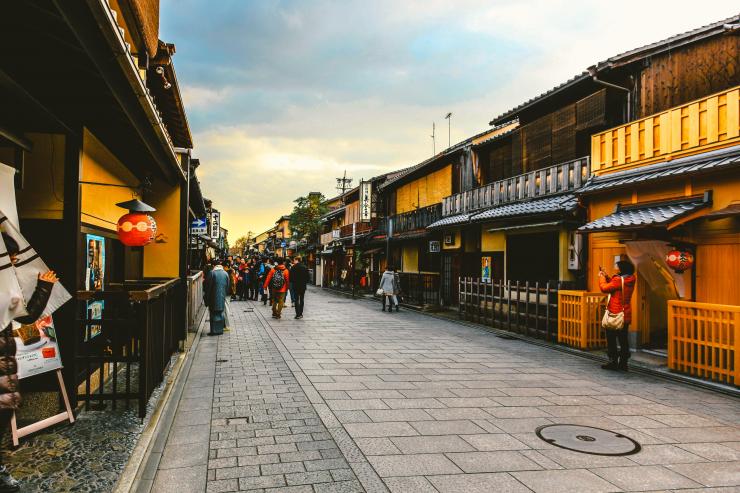
History of Gion
Gion initially served as an entertainment hub for visitors to the Yasaka Shrine, situated at the end of its main street, Shijo-dori.
By the 17th century, Gion evolved into the focal point of geisha culture. Geishas, skilled entertainers versed in music, dance, conversation, and the tea ceremony, undergo rigorous training in specialized schools from a young age. They reside in houses known as okiya, where they receive care from a foster mother, referred to as okasan.
Within the city of Kyoto, Gion comprises two geisha districts known as hanamachi or gokagai: Gion Kobu and Gion Higashi. Despite a significant decline in the number of geishas in Gion over the past century, the area remains renowned for preserving traditional Japanese architecture and the refined arts of entertainment.

Gion Kobu
Gion Kobu stands out as the larger and more renowned of the two neighborhoods. Established in 1881 through the division of the original Gion district, it boasts a plethora of teahouses (ochaya) where geishas and apprentices (maiko) provide their services to patrons.
The area also features restaurants, shops, and traditional lodgings (ryokan). Notably, Hanami-koji is one of Gion Kobu’s most famous streets, showcasing typical wooden houses (machiya) and, if you’re lucky, the sight of geishas or maikos heading to their engagements.
Moreover, Gion Kobu plays host to the Gion Matsuri festival, among Japan’s most significant, held annually in July. During this month, the geishas of Gion Kobu present a dance performance known as Miyako Odori, providing a distinctive opportunity to witness their artistry firsthand.
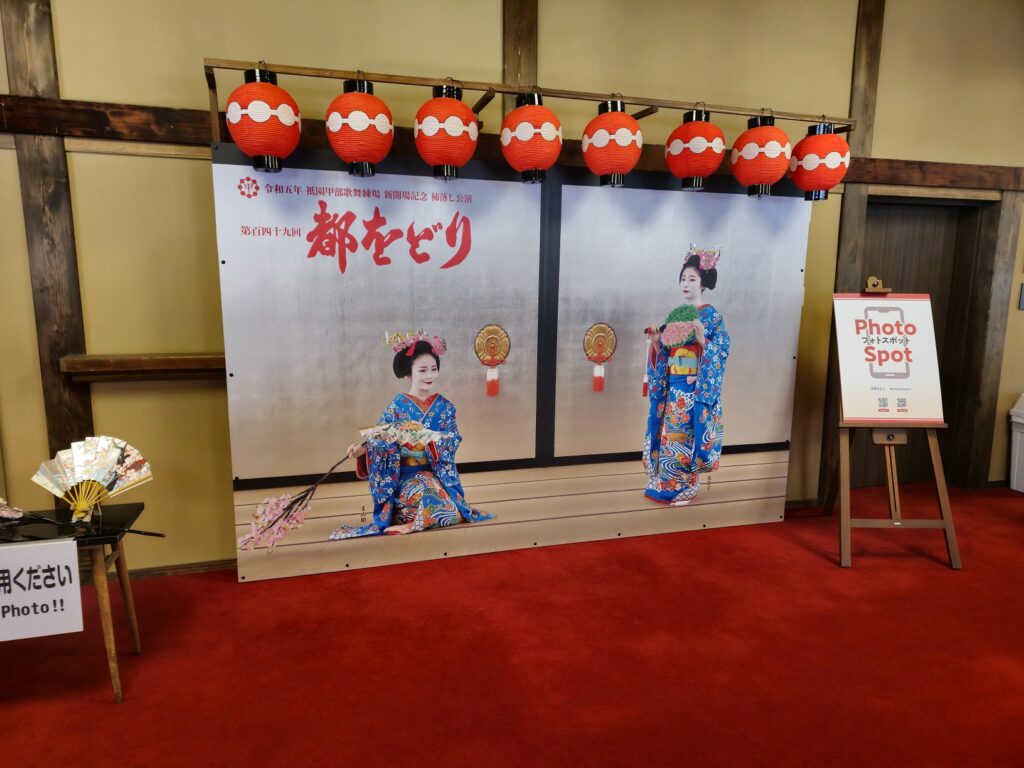
Gion Higashi
The other neighborhood that emerged following the division of the old district is Gion Higashi. It stands as a smaller, quieter counterpart to Gion Kobu, featuring fewer teahouses and a smaller geisha presence.
Presently, Gion Kobu houses approximately 80 teahouses where maikos and geishas actively work on a daily basis. In contrast, Gion Higashi hosts only about 12 teahouses, making it less common to encounter maikos or geishas wandering its streets compared to Gion Kobu.
Yet, Gion Higashi maintains the enchanting ambiance of the past with its narrow pathways and historic structures. One of its most picturesque streets, Shinbashi-dori, lines the Shirakawa canal, adorned with lanterns and cherry trees.
Additionally, Gion Higashi hosts its own dance showcase called Gion Odori, held annually in November. It provides a splendid opportunity to admire the beauty and grace of the geishas from this neighborhood.
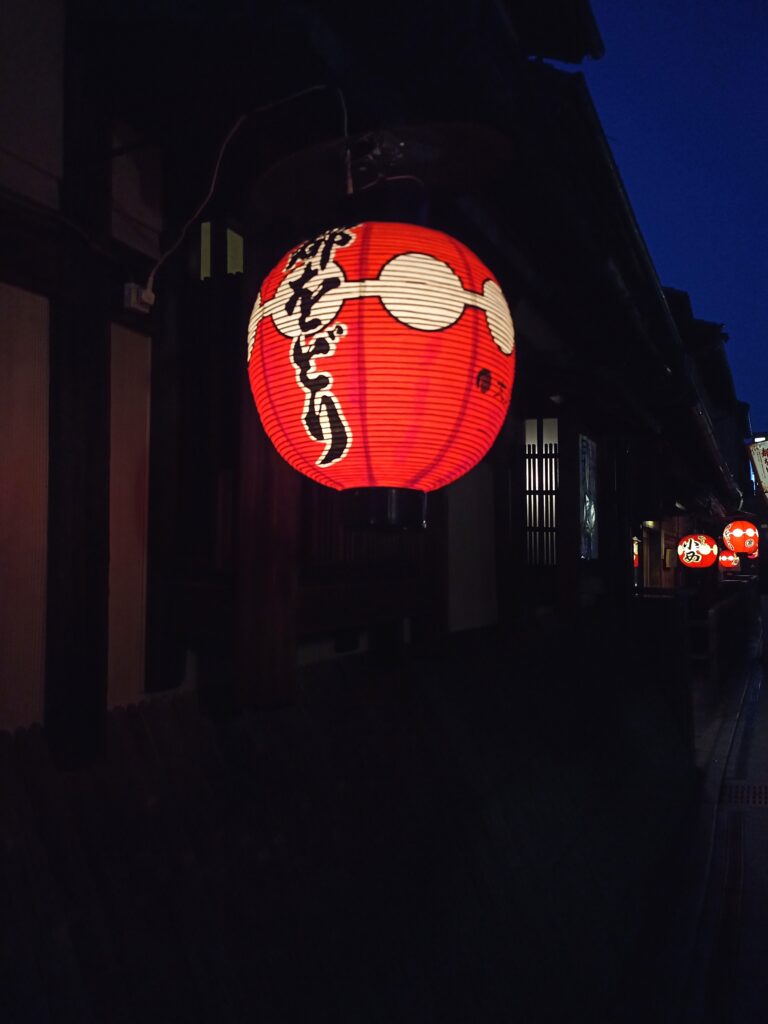
The neighborhood of Gion
Gion, situated east of the Kamo River near the Yasaka Shrine, stands as Japan’s most renowned geisha district.
Its streets are graced with traditional wooden machiya houses, serving as both residences and workplaces for geishas and their apprentices, known as maikos. The area also boasts a myriad of restaurants, teahouses, and artisanal stores.
A visit to Gion feels like a step back in time to Japan’s feudal era. The ambiance is serene and enigmatic, particularly at dusk when the streets light up, and the geishas venture out for their appointments. If fortunate, one may catch a glimpse of them in their vibrant kimonos and intricate hairstyles.
However, it’s crucial to respect their privacy and refrain from disrupting them or pursuing photographs. It’s essential to remember that they are individuals going about their work, not tourist attractions.
For those interested in delving deeper into the geisha culture, a visit to Gion Corner offers music, dance, and theater performances. Attending a festival or event, like the Gion Matsuri or the Miyako Odori, also presents an enriching opportunity to learn more about the life and artistry of geishas.
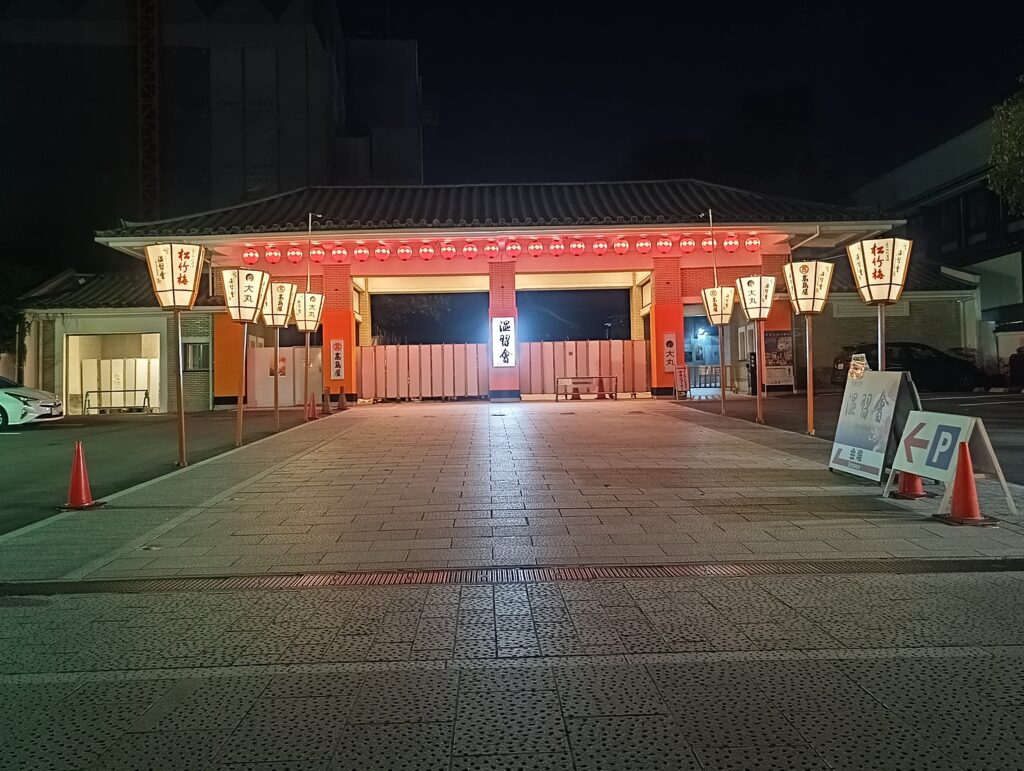
Both districts host geisha dance festivals every spring and autumn. These captivating shows spotlight the talents of geishas and maikos in singing, dancing, and music. These festivals offer a rare chance to admire the artistry and grace of geishas while gaining insights into their history and cultural significance.
Over time, the popularity of geishas has waned due to shifts in societal and cultural norms. Presently, there are fewer than a thousand geishas in all of Japan, with the majority residing in Kyoto. Despite this decline, Gion remains a place brimming with allure and tradition, inviting visitors to witness and appreciate the elegance and artistry of the geisha.
Other geisha districts in Kyoto
In Kyoto, there are five districts known for their geisha presence: Gion Kobu, Gion Higashi, Pontochō, Kamishichiken, and Miyagawacho.
Pontocho
Pontochō is the liveliest and most modern gokagai in Kyoto. Situated west of the Kamogawa River in the Nakagyo district, it’s a narrow pedestrian lane spanning approximately 600 meters along the Kamo River, between Shijo and Sanjo avenues. The street bustles with an array of bars, restaurants, cafes, and nightclubs, making it a perfect spot to revel in Kyoto’s nightlife and culinary offerings.
It’s also steeped in cultural significance as the birthplace of kabuki, a traditional Japanese theater blending music, dance, and drama. At the street’s southern end lies Minami-za Theater, where kabuki performances mesmerize audiences throughout the year.
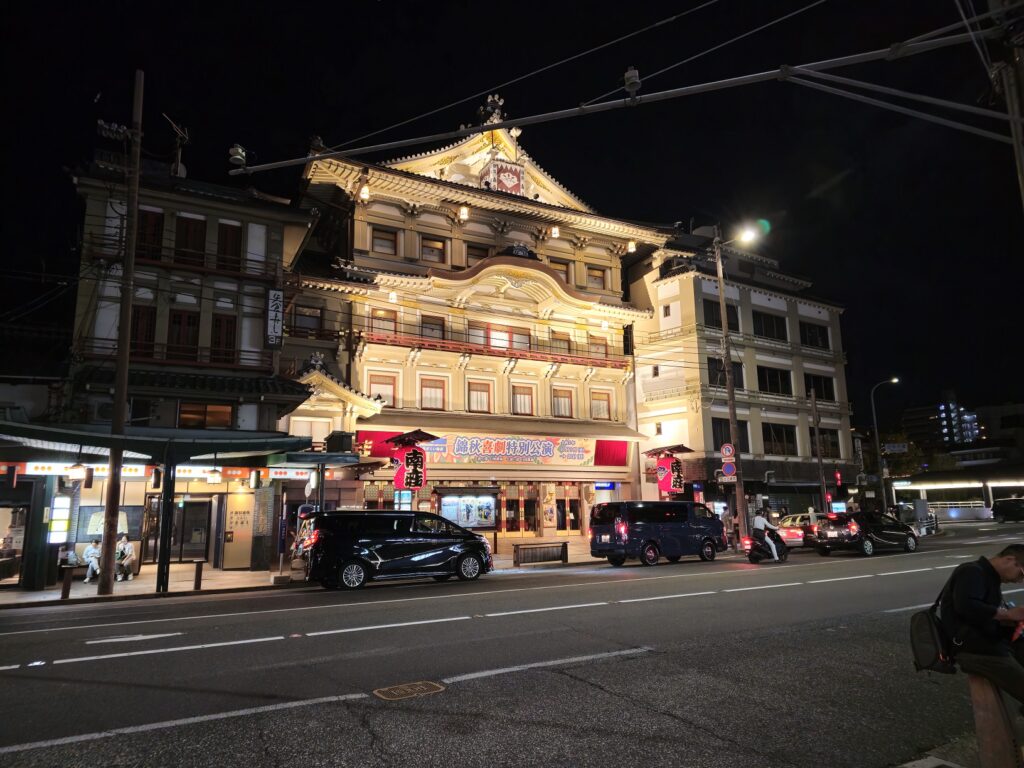
The best time to explore Pontocho is during dusk or nighttime, when the district gleams with the glow of lights and the shimmering reflections from the river. Visitors might catch a glimpse of a geisha or maiko strolling along the street or entering and exiting establishments, adding to the area’s captivating ambiance.
Kamishichiken
Kamishichiken is the oldest among Kyoto’s five geisha districts. Its name, translating to “seven houses above”, originated from seven teahouses built using materials from the Kitano Tenmangu shrine’s construction in the 14th century. Initially serving as places of entertainment and hospitality for shrine visitors, these teahouses eventually evolved into the focal point of geisha activities in the vicinity.
Around 25 maikos and geisha work in exclusive teahouses known as ochaya, hosting private gatherings. These establishments are discerning in their clientele, typically admitting regular patrons or those recommended by them. Nonetheless, there are alternative avenues for experiencing the geisha arts within this neighborhood.
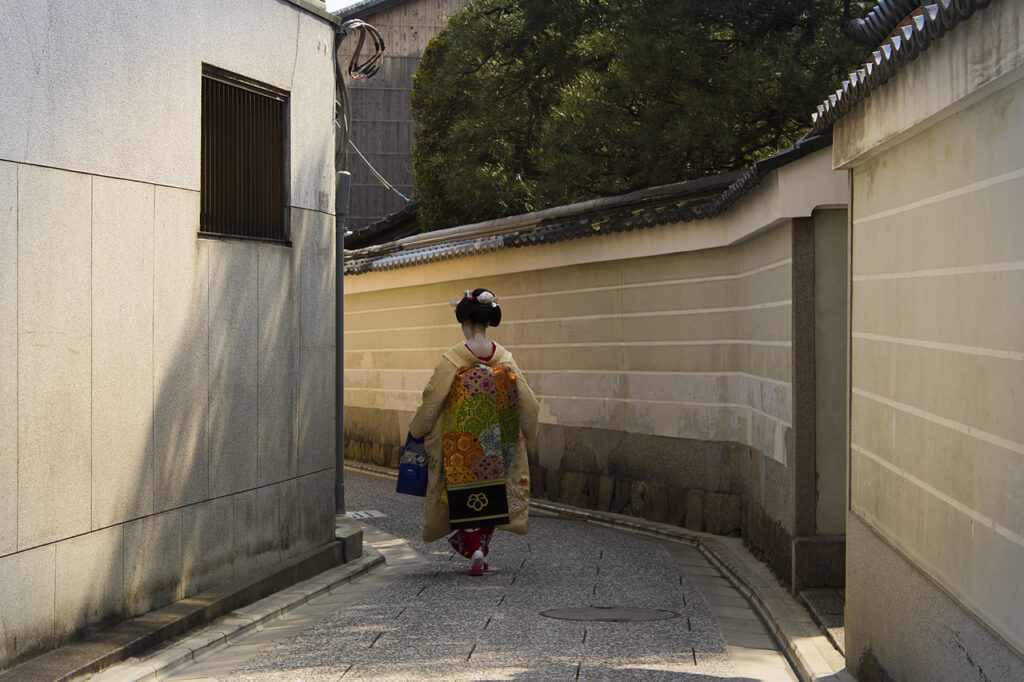
One option is to attend performances at the Kamishichiken Kaburenjo theater, where maikos and geishas showcase traditional dance and play instruments like the shamisen or koto. These shows occur biannually: the Kitano Odori in spring (late March to early April) and the Kotobukikai in autumn (second week of October).
Miyagawachō
Miyagawacho is situated south of the Kamogawa River, near Yasaka Shrine, and is steeped in history, culture, and natural beauty.
The name “Miyagawacho” translates to “the village of the palace,” owing to its proximity to the imperial palace and its frequent visits by nobles and samurai.
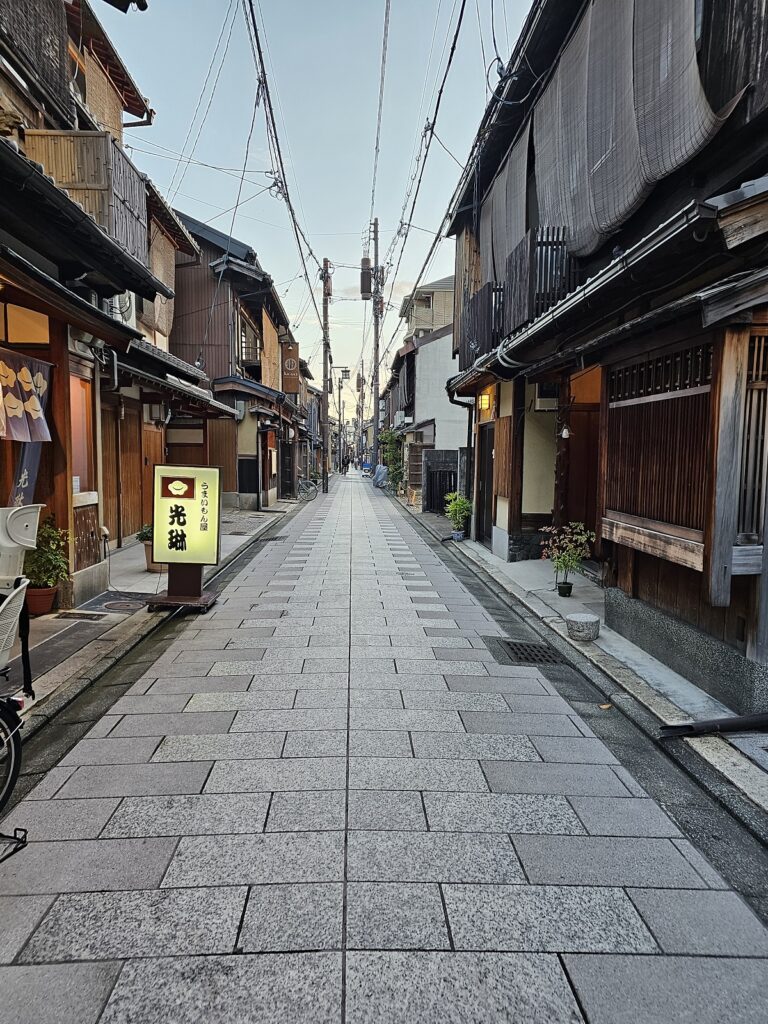
April in Miyagawacho is a wonderful time to witness vibrant dance and music festivals featuring geisha and maiko. Notably, the Kyō Odori festival takes place from the first to the third Sunday of April at the Miyagawacho Kaburenjo theater.
Compared to the Miyako Odori festival in the nearby Gion district, the Kyō Odori offers a more relaxed ambiance. Attendees have the opportunity to engage with geisha and maiko, ask questions, and even take photographs with them. The Miyagawacho Kaburenjo theater’s traditional architecture further enhances this unique experience.
How to get to Gion
From Kyoto Central Station, you can opt for buses number 100 or 206, both offering convenient access to the district. The closest bus stops are either “Gion” or “Higashiyama Yasui,” depending on the bus route. Both stops are situated near this renowned district.
Alternatively, it is also reachable on foot from Kyoto Station, taking approximately 20-25 minutes on foot.
Moreover, you can also walk to Gion from Kiyomizudera Temple, another one of the most iconic sites in the city.
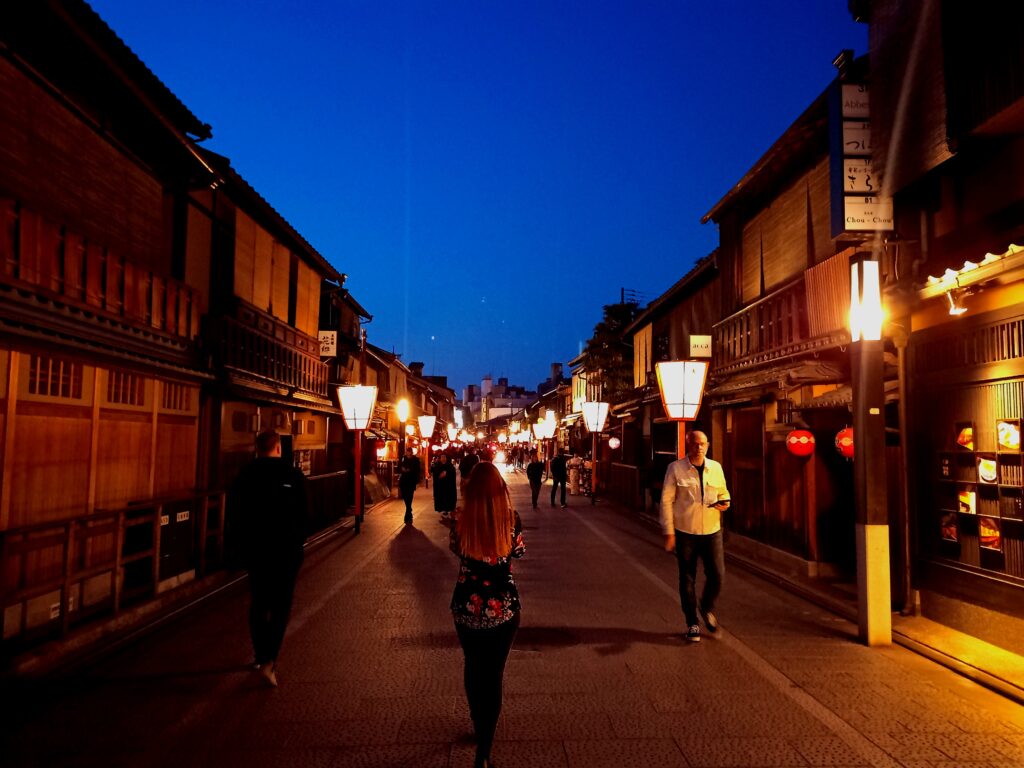
Where to eat in Gion
If you’re keen on savoring Kyoto’s cuisine, this district offers a plethora of dining options. From traditional to contemporary, you’ll find a variety of restaurants offering typical dishes like okonomiyaki, yakisoba, or kaiseki. Here are some of the highly recommended restaurants:
- Chihana: A prestigious restaurant boasting 3 Michelin stars, offering exclusive private dining experiences using seasonal ingredients. Reservations are mandatory, and while the price is high, the extraordinary experience is well worth it.
- Gion Tanto: This eatery specializes in okonomiyaki and yakisoba, both dishes prepared with dough and vegetables on a griddle. The ambiance is casual, and prices are quite reasonable.
- Gion Karyo: A kaiseki restaurant serving traditional Japanese cuisine featuring a series of small, refined dishes. The menu changes with the seasons, offering various options. With a view overlooking the Shirakawa stream, it provides an exceptional dining atmosphere.
And if you’re a ramen enthusiast, we’ve got good news! Here, we tried two of the most exceptional ramen bowls we’ve ever had 😳:
- At Miyako, we tasted the most incredible ramen ever, featuring a rich, flavorful broth that’ll leave you speechless!
- At Musoshin, we tried the delightful ‘black ramen‘, a Gion specialty that’s sure to surprise you!
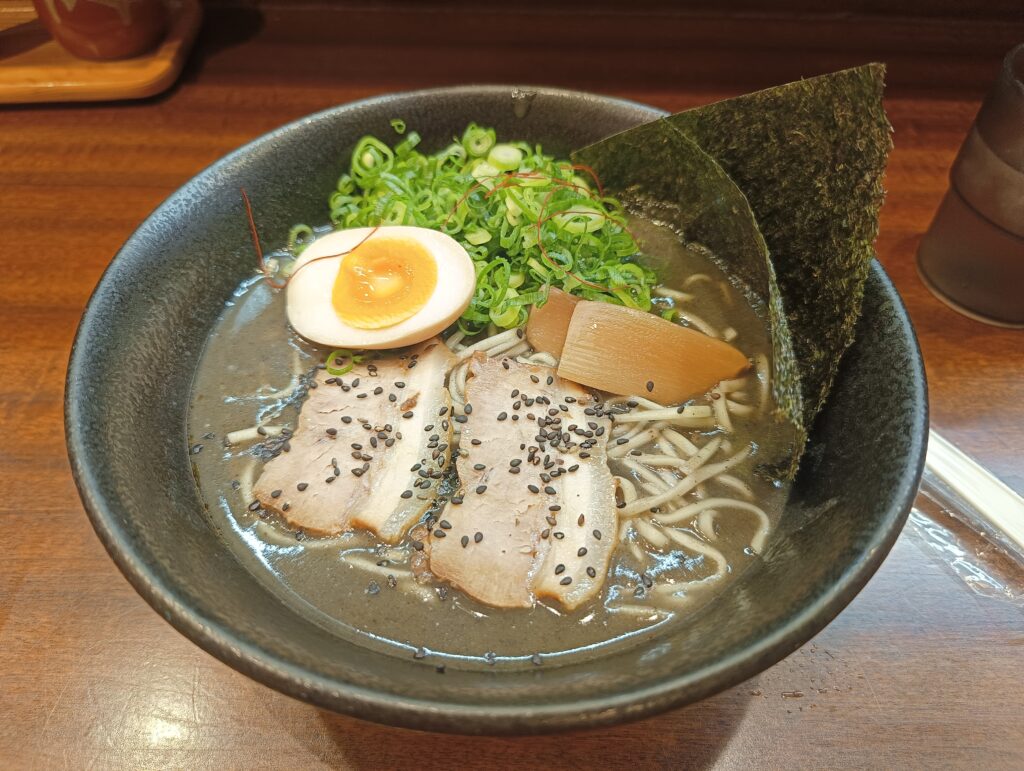
If you’re up for the challenge, leave us a comment and share whether it ranks as the best ramen you’ve ever had!😉
Where to sleep in Kioto
Consider staying in a machiya, a traditional Japanese house, especially if you’re traveling with your family.
🏠 Machiya:
If you prefer staying near Kyoto Station, this hotel is only a 3-minute walk away:
🏩 Near Kyoto Station:
Our preferred option is to stay in the Gion district. Hotel ZIZI Kyoto Gion offers spacious rooms with balconies at very affordable prices:



